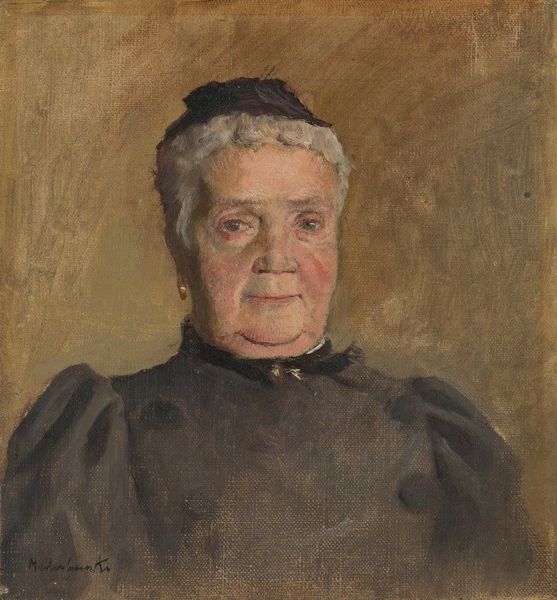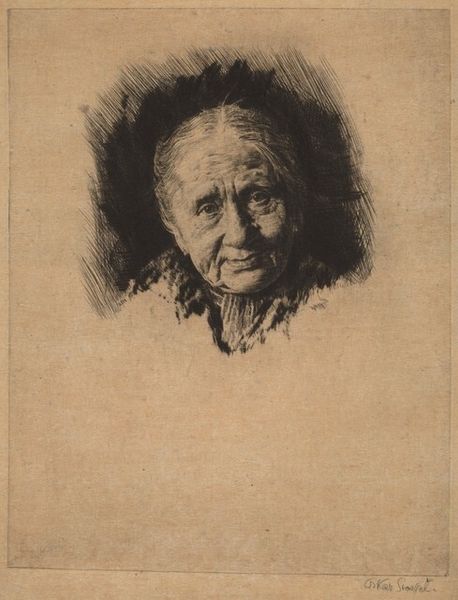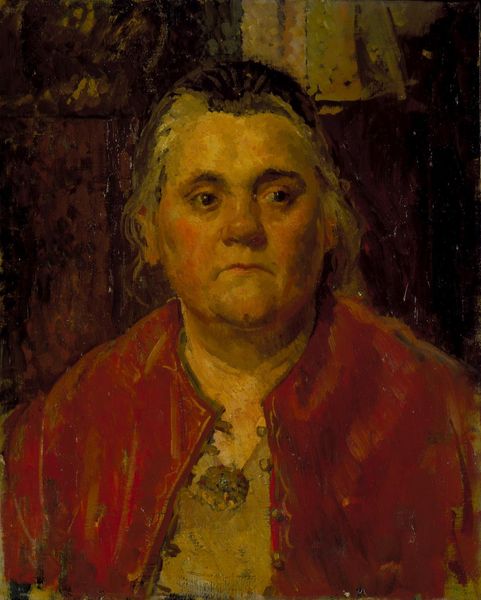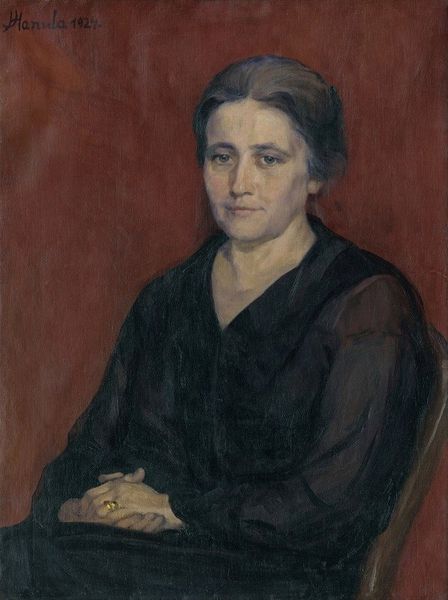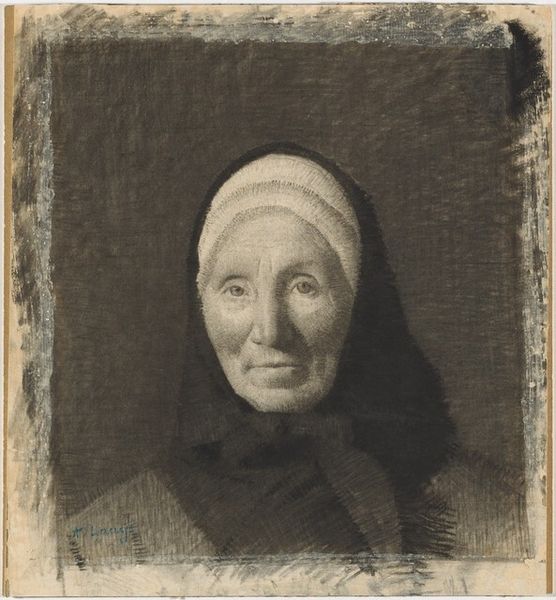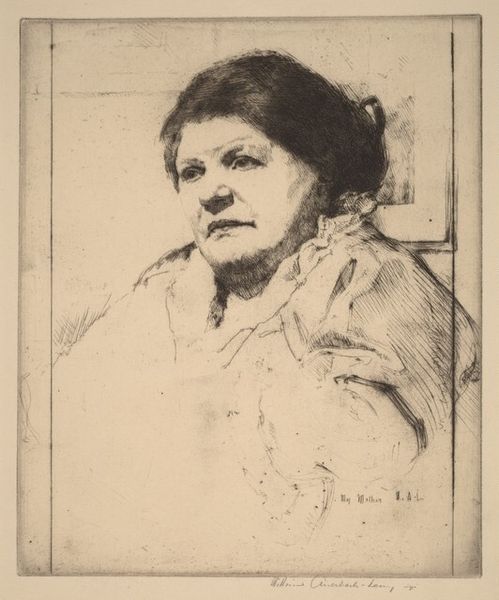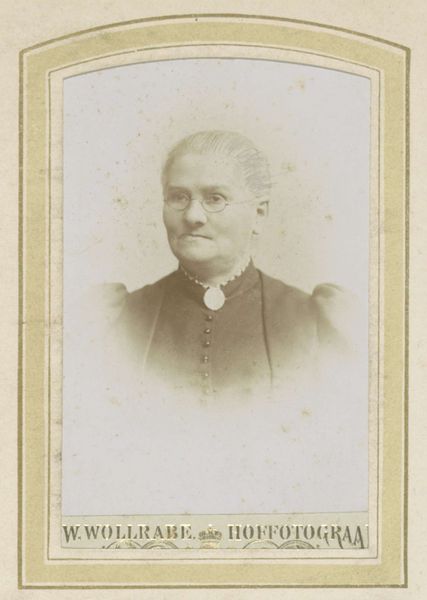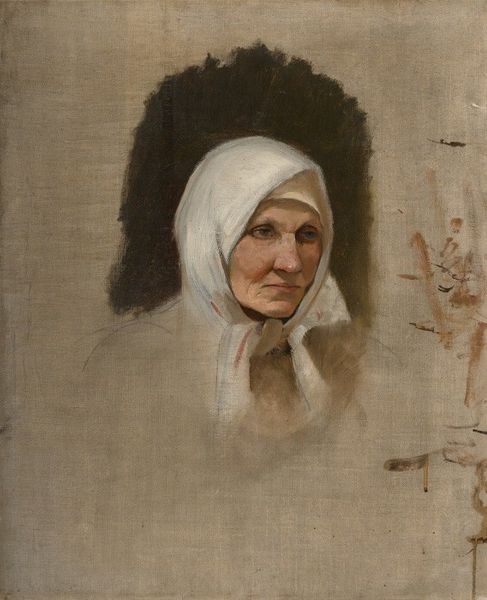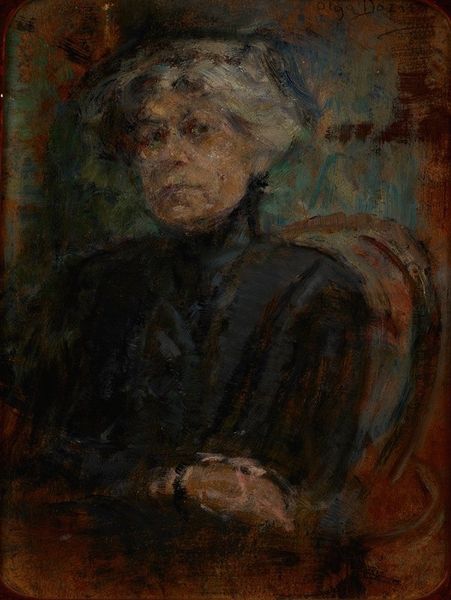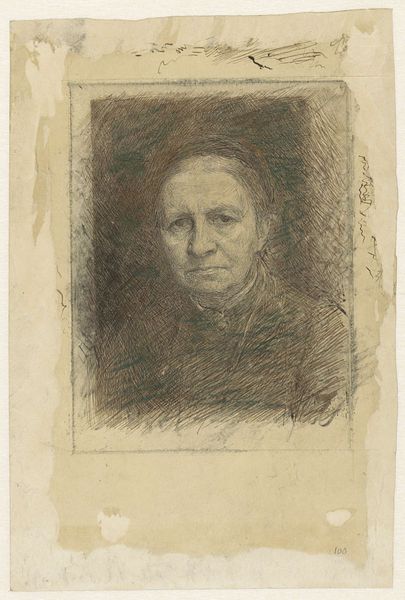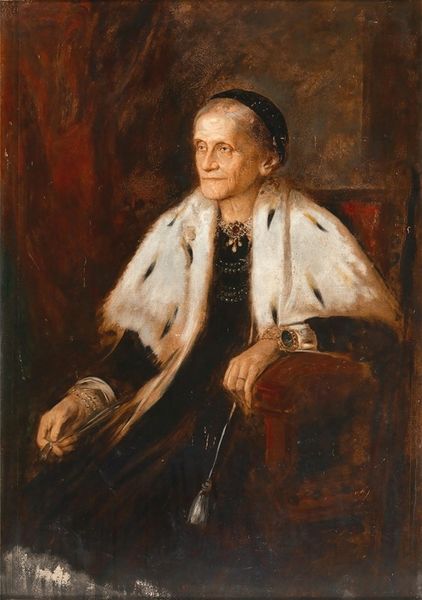
painting, oil-paint
#
portrait
#
figurative
#
painting
#
oil-paint
#
charcoal drawing
#
oil painting
#
academic-art
#
charcoal
#
modernism
#
realism
Copyright: Public Domain: Artvee
Curator: What a somber, almost ghostly portrait. It evokes such a strong sense of stillness. Editor: Yes, and consider this "Portrait of a Woman," painted by Jozef Hanula in 1928, gives us insight into the intersection of class, gender, and societal expectations of women in the early 20th century. How does this woman embody or challenge these norms through the image? Curator: Her attire is very traditional, the muted palette adding to this austerity. Her dress, the strands of beads…they suggest a life deeply connected to tradition. And yet, her direct gaze feels modern, even defiant, in its own way. I find myself pondering what it represents – maybe resilience? Editor: You've touched on something essential. The beads and the brooch themselves have weight beyond mere decoration. The circular form often speaks to the cycles of life and eternity, and beads have strong spiritual or devotional symbolic connotations. Curator: Precisely. And consider that 1928 was a period of social and political change, with women actively seeking expanded rights and roles. It leads me to question whether the sitter has a conservative disposition. To me, that stare suggests she understands something profound about her role in a rapidly changing world. Her internal emotional experience seems crucial. Editor: It is compelling to think of her gaze as a signifier of social shifts. The woman is presented through very familiar, culturally acknowledged symbolic systems, that are almost archetypal and timeless, yet she stares in front with determination and poise. Curator: Yes. Hanula does well in his exploration of visual and internal representations of the female image. Looking at the visible damage to the canvas, it’s like time itself is making its mark on her story, reminding us that her identity is constantly shaped by external social forces, that are fleeting yet eternal. Editor: And in its physical presence, its surface texture, this artwork acts as a tangible echo of cultural memory, inviting each viewer to confront the intricate layers of meaning interwoven within her representation. A portrait isn't just about resemblance, but about invoking and interrogating history itself. Curator: Exactly. I’ll never look at beaded jewelry the same way now, having understood more about how traditional symbols take on new meanings depending on shifting societal frameworks. Editor: Nor I. I shall reflect on what symbols can tell us, beyond and within their familiar aesthetic contexts.
Comments
No comments
Be the first to comment and join the conversation on the ultimate creative platform.
